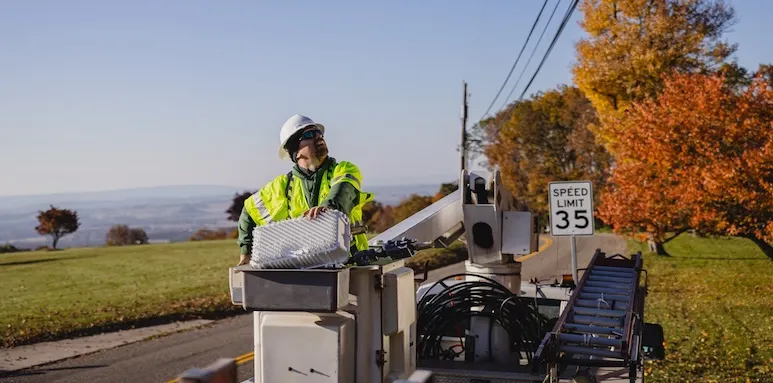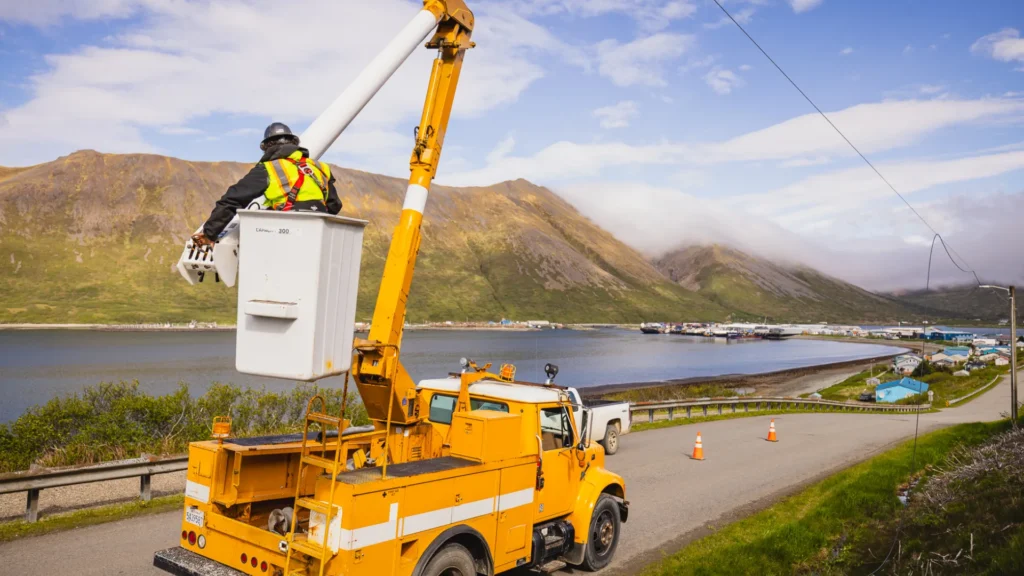There’s no doubt that gigabit internet is the connectivity of the future. Super speeds will forever change how we live, work, play and learn, and will be the foundation of the next step in the internet’s expansion. It may seem far away, but gigabit internet is already here, rolling out across various regions of the country. Internet service providers are ahead of the game, launching ultra-fast speeds in communities of all sizes, even in the most remote areas. And this summer, a small town in rural Kansas is about to join the ranks of gigabit communities.
Eagle Communications, a rural provider in Kansas, Missouri, Nebraska and Colorado that we wrote about last week, is in a unique partnership with St. Francis, home to approximately 1,300 people who live on what you might call an oasis that sits in the middle of farmland. Though the ISP is already delivering gigabit speeds over its network to businesses and school districts, the launch will mark the first time Eagle will be offering 1 gig for residents over a fiber network to the home. Elizabeth Jaeger, Eagle’s director of marketing, explained how this upcoming connectivity project has been a community effort, and one that the residents of this progressive town have pushed hard for.
“This is economic vitality. They know what they need to do to keep their community alive,” said Jaeger, further emphasizing the town’s strong drive to stay positioned and relevant in the world. On top of that, the community is very aware of its aging population. “This robust, reliable and fast internet will give them the ability to stay connected with physicians from afar, to skype and video chat with family and grandchildren who have left town, and to just connect with the world in a way they aren’t able to do right now,” she added. Currently, Eagle provides St. Francis with wireless internet at speeds of up to 5Mbps.
Eagle’s relationship with St. Francis started back in 2005, when the town moved from being a municipally-owned broadband system to one that Eagle would manage and upgrade over the next 12 years as its wireless network service provider. Eagle also assisted the St. Francis Internet Committee last year in submitting a grant application to the U.S. Department of Agriculture requesting funding for a new buildout. Though the USDA denied the application because it believed the town had adequate LTE coverage, the Internet Committee rallied the community to encourage Eagle to invest in the town’s future. It gathered over 900 signatures, as well as numerous letters from key stakeholders in the community, including those representing county government, hospitals, school districts, and libraries. Their voices rang loud and clear to Eagle: St. Francis was interested, willing and ready to be brought up to speed. And so Eagle took up the investment.
“With this initiative, we answer a number of challenges: adequate broadband in terms of education, healthcare needs with them needing fiber symmetrical internet to be able to quickly and efficiently move electronic medical records, and public safety issues with all of their agencies–the courthouse, the jail, the EMS, all the things that support a community in terms of an emergency,” said Jaeger. Not to mention, St. Francis has a rather busy county airport, a clinic that surrounding communities frequent, a hospital, and public library.
As part of their partnership with Eagle in the project, community members volunteered to help attract a minimum of 210 people to sign up for the service. “So the plan was to take our 100 people who were already signed up for our wireless internet, and then take their 210 signups, which would then give us over 300 subscribers. That’s what we decided we needed to build and maintain a new fiber system up there,” said Travis Kohlrus, general manager at Eagle. Though the community is not providing any funding for the project, the volunteers are recruiting customers, and the agreement is one that Kohlrus said gives Eagle the confidence to sustain the project in the long-term. The ISP is prepared to spend the month of May and June in St. Francis installing the fiber and electronics of the main build, and then installing customers around July.
As gigabit services have gradually launched over the past few years, the question inevitably arises as to whether the average residential customer actually needs gig speeds. Jaeger relayed that even on Eagle’s highest internet usage day for a single household, customers don’t usually come close to consuming a gig. “I think every broadband provider in our size range wrestles with the gig concept,” said Jaeger. How important is it to provide a gigabit service? How much speed capability do you need?
“But if you aren’t able to provide a gig, what does that do to the perception of your company? And about what technology you can provide?” said Jaeger. So Eagle goes the extra mile in listening to its customers, building relationships with communities like St. Francis, analyzing what’s being used in their system, and then working hard to bring upgrades to those regions that demand higher speeds. And ultimately, added Jaeger, no matter what speed a customer might need or want, Eagle will have an offering that provides a good and reliable internet experience.
Which is really what any customer could want to be adequately prepared for the technology and media experiences of the future, which lie just around the corner.









